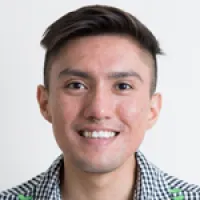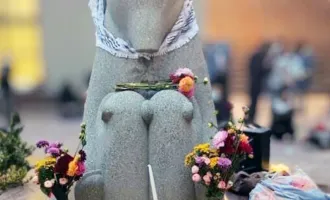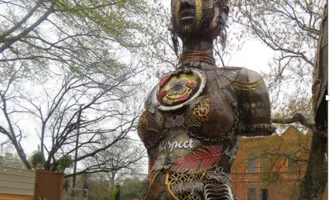Holding a Critical Lens to UCSF
The year 2020 has shaped up to be the most socio-politically tense year from COVID-19 to global protests of police in response to the unjust killings of George Floyd, Breonna Taylor, Tony McDade and countless others to the upcoming presidential election.
Following Floyd’s death, educational systems across the U.S. mobilized to implement diversity, equity, and inclusion (DEI) initiatives to express solidarity with BIPOC (Black, Indigenous, and People of Color) students. The gesture appears to be supportive, yet it remains elusive towards the root of the problem: Why are BIPOC students underrepresented in universities like UCSF in the first place? One could extensively theorize on this question, although, the simple answer is that the system is working exactly the way it was set up to.
Addressing this question and approaching the topic of human rights issues in the U.S. means understanding how these issues are rooted in settler colonialism. The U.S. is a settler colonial state that was built through: 1) The forced removal of Native Americans from their land through genocidal tactics and 2) The use of Black slavery to build the U.S.’ capitalistic economy.
European settlers built this country through the power gained from land and wealth at the cost of erasing Native Americans and enslaving Black people.
In other words, the U.S. was being built as Native Americans were resisting settler colonization and Black people were fighting for liberation. By the time chattel slavery was abolished whilst Natives Americans were simultaneously being forced onto reservations, the U.S. was 88 years old, chattel slavery had existed for 246 years, and European settlers had been in the Americas for 373 years.
Ultimately, racism is embedded within every fabric of this country. While all People of Color will face oppression under white supremacy, Black and Indigenous/Native American oppression in the U.S is unique compared to non-Black and non-Indigenous People of Color.
Our oppression is directly rooted to its development. So, in a country built on white supremacy through the oppression of Black and Indigenous people, all other People of Color will bear that oppression.
This explains why policing, which has anti-Black origins, also disproportionally affects Latinx people and Native Americans. So, why is it that BIPOC students are underrepresented in universities like UCSF?
Historically, the U.S used education as a tool of Native American colonization through Indian Boarding schools. This same system segregated public schools during the era of Jim Crow.
It is necessary to understand that education is only one structural component of Black and Indigenous oppression. In the context of Black oppression, systems like policing and the impact of redlining can also overlap with education to further oppress Black people. Black students live in overpoliced and historically oppressed communities.
Likewise, Black students are 3x more likely than White students to be suspended and expelled, making them more disposed to entering the juvenile justice system. For Native American students on reservations, we are not afforded access to adequate and quality education.
We are often left out of most dialogue surrounding race and we remain traumatized by a country built to erase us. Native American and Black students make up the lowest high school graduation rates. Ultimately, to be Black and/or Native American in this country means to exist in a system that was not built for us.
DEI initiatives are insufficient until schools like UCSF understand how they exist as a component in systems that oppress BIPOC. Several scholars have demonstrated the link between academic universities and gentrification.
In SF/Bay Area, contemporary gentrification is the result of the dot-com tech boom at the end of the 1990s. One sector of the tech industry in the Bay Area is biotech. UCSF’s Genentech Hall was the result of a biotech settlement, it went up in 2003 and led to rapid development of the Mission Bay campus and the surrounding neighborhood.
UCSF is now the 2nd largest employer in SF and the 4th largest employer in the Bay Area. The Black population of San Francisco has dropped 43% since 1990. The Mission Bay campus contributed to gentrification of Bayview-Hunters Point, a historically Black working-class neighborhood where Mario Woods and Jessica Williams were killed by SFPD in 2015 and 2016, respectively.
If UCSF really cared about DEI, we would begin by acknowledging our contribution to the systems that play a role in the oppression of BIPOC. We would strive to build reparations with communities like Bayview-Hunters Point, given their consent.
We would be on the streets during every protest calling for the end of a racist pandemic sustained by policing, prisons, and capitalism. We would aim to invest in transformative justice praxis such as calling for the abolition of UCPD. Instead, we choose to become the most diverse institution we can, preserving academic elitism over the current lives of BIPOC in SF/Bay Area.
This process is iterative because we bring in more BIPOC students while continuing to contribute to the systems that cause disproportion of BIPOC students in education within SF/Bay Area. Furthermore, DEI initiatives are counterproductive because BIPOC will continue to experience oppression outside of the academe, until these systems are dismantled.



